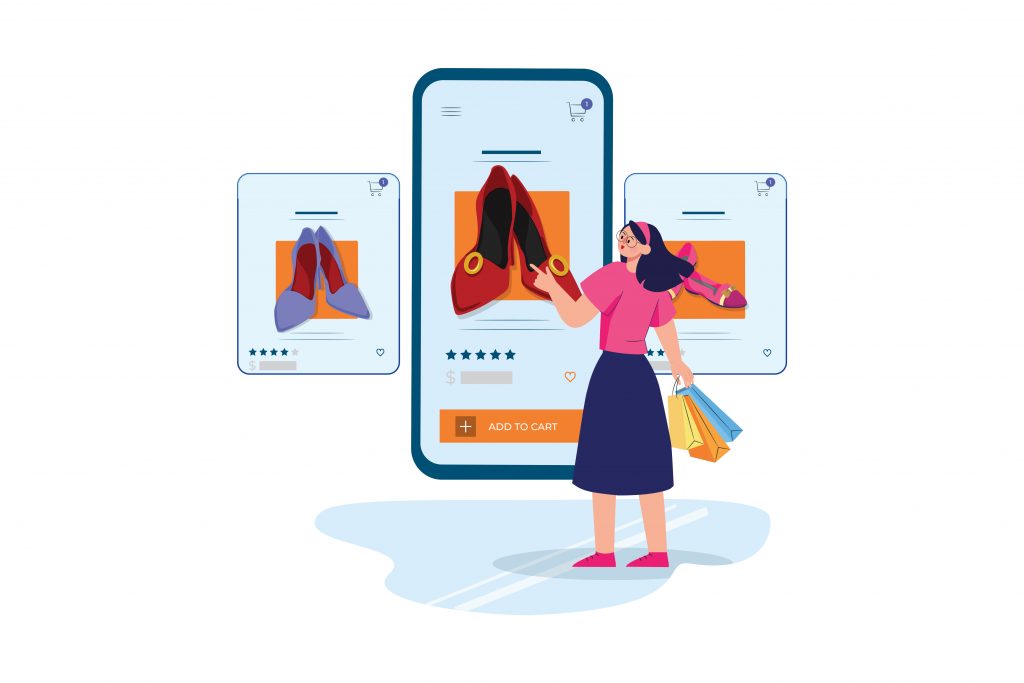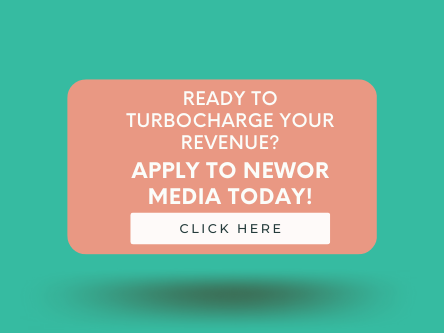
For mobile advertising, you only get paid when people see the ads you’re running on your site or app. So, ad placement and the viewability rate determine whether an ad gets counted as viewed. Just because an ad loads on your site or app, it doesn’t mean it will be a viewable impression.
For publishers looking to optimize their mobile revenue, you must create and place ad units properly so that impressions count — especially for in-app advertising.
In this article, we’ll outline everything you need to know about mobile app viewability, the challenges, and how to maximize your earning potential.
What is Mobile Ad Viewability?
Ads are generally sold in two ways:
- Cost per click (CPC)
- Cost per thousand (CPM)
For CPC ads, you only get paid when someone clicks on them. But many campaigns are based on impressions, so it’s crucial the industry has a standard way to measure what counts as an impression.
Ad measurement requires ads to meet two metrics to count as a viewable impression: viewability and time in view.
- Viewability: At least 50% of a display ad must be viewable on the screen.
- Time in view: Display ads must be in view for at least one second.
Unless these thresholds are met, an ad will not be counted as a viewability impression.
For mobile video ads, a viewable video impression requires the same 50% but for two seconds per the Interactive Advertising Bureau (IAB) guidelines. However, many campaigns are bought based on longer durations or completed actions.
These guidelines, issued in accordance with the Media Rating Council (MRC), have been accepted as the industry-standard ad units for mobile advertising viewability.
Why is Mobile Ad Viewability So Important?
For publishers, mobile ad viewability measurement is essential to generating revenue. The right placements, ad types, and formats can attract higher bids for publisher inventory.
The majority of traffic today on the internet is mobile. This restricts the number of digital advertising units that can be shown on screen at any one time compared to the desktop, so ad viewability becomes increasingly important.
For advertisers, viewable ad impressions improve the return on ad spend (ROAS). For example, Google research also showed that when ads meet viewability standards, they provide a four times higher lift in conversions than ads that don’t meet the standards. That makes sense if you think about it, since ads that are seen will generate better results than ads that are only partially seen.
Another benefit is that as ad viewability increases, the user experience increases as well. Because ad servers must deliver ads quickly to capture users’ attention, ads today now load faster than before, improving the user experience.
How Can Mobile Ad Viewability Be Measured?
Viewable ad impressions must be measured to verify accuracy. The IAS created a code for publishers to use that can integrate with viewability vendors. It’s called Open Measurement SDK (OM SDK) and is a software development kit that gives third parties the ability to pull viewability data from Ad Tech vendors.
There are other solutions available as well and many DSPs and SSPs provide tools as well. For example, Google has an in-house tool called Active View that captures viewability metrics. For those wanting independent verification, besides the OM SDK option from IAS, there are also other MRC-accredited providers that help track the viewability rate for publishers, including:
- Double Verify
- comScore
- Moat
- Pixalate
- White Ops
- Fraudlogix
- Forensiq
Each of these will monitor the click-through rate (CTR), look for potential ad fraud or bot traffic, and measure viewability metrics for programmatic ad units.
Measuring ad viewability helps build trust for advertisers. It assures them that people are seeing the ads they are paying for. It’s not like the old days when ad buyers could open up the newspaper and see their ad. Today, programmatic ad buys happen in real time. Ads can be shown instantly across hundreds or thousands of websites or mobile apps. It’s impossible for advertisers to check on every ad placement as they are occurring, so they must be able to trust that the ads were actually seen.
As such, advertisers should only work with Ad Tech vendors that support the ad viewability standards and prioritize accuracy. They should also hold their vendors accountable for maintaining these standards.
Publishers must also have clear insight into ad viewability to ensure advertisers are getting what they paid for and optimizing their monetization. By adopting best practices and continuous testing, publishers can provide the environment advertisers need to drive effective advertising campaigns.
Benefits of Mobile Ad Viewability
The biggest benefit of tracking ad viewability is to see and understand the results of a mobile ad. Viewability metrics are taken into account when placing ads and analyzing campaign results. So, the optimization of ad units for mobile devices plays a big part in monetization for publishers.
If display ads or video advertising is placed with a publisher, but not delivered as a viewable impression, it may not meet advertiser campaign goals. This can impact future ad buys or cause your site to be downgraded for future campaigns.
Publishers need to measure their mobile ad viewability and test different ad units, formats, and placements to optimize performance and revenue. Without measuring, publishers are unable to see the results or how interactive an ad has been with a visitor.
Mobile ads are an incredibly effective tool for marketers. Because of the small screen size on mobile devices, an advertiser generally gets a 100% share of voice — often the entire screen. Mobile ads also tend to perform better and drive higher time-in-view metrics than desktop ads.
Advertisers need to know which ads are being seen and performing, so they can refine campaigns to get similar positive results in the future and make future buying decisions.
Measurement tools can also help weed out bot traffic. Views need to be from humans to be effective.
Challenges for Mobile Advertisers
Anyone can add ad units to their mobile site, but it doesn’t mean it will be in the right place, target the correct audience, or stop viewing from invalid traffic such as bots. Ad fraud is bad for everyone involved in the advertising industry, but it’s also a significant problem. Advertisers shouldn’t have to spend ad budgets on bot traffic, so sites want to limit exposure.
There are also other challenges for mobile advertisers and publishers.
Page Load Speeds
While faster internet speeds help, ad calls by nature introduce latency into the delivery system. If ads take even a few seconds to load, users may have already scrolled past them, which can result in ads not being counted as viewed. Worse, research shows that 40% of users won’t wait more than three seconds before abandoning a website altogether. According to Crazy Egg, a one-second delay in loading times can result in:
- 11% fewer page views
- 7% fewer conversions
- 16% decrease in customer satisfaction
When working with Ad Tech vendors, they must ensure minimal latency in the ad ecosystem for programmatic advertising.
Design Issues
Mobile ads can be hidden behind browsers or blocked by tabs. If ads cover up important content or disrupt viewing, they can also hurt the viewing experience and result in people leaving sites quickly or not returning.
Ad viewability is also highly dependent on your mobile site or app being optimized for mobile. If your site has design problems that prevent it from rendering properly on various mobile devices, loads too slowly, or is generally not mobile-friendly, performance will suffer.
Ad Unit Placement
Ads in the wrong place can significantly hurt ad impressions. Ads might not be seen at the top of the screen or count for ad viewability measurement depending on where it’s located. Publishers need a way to test and optimize ad placements to find the best placements for ad units.
There’s also a big difference in ad placements between desktop and mobile sites. While the top of the page generally gets the highest visibility, mobile users tend to scroll much more quickly than desktop users. So, ads that are at the very top of the page may get low viewability scores. Middle of the page and bottom of the screen banner ads may result in better results.
Ad Blockers
Users may also have an ad blocker set up that filters out ad impressions for various ad formats. In this scenario, there’s little that an advertiser or publisher can do about the ad block software their site visitors have installed. Luckily, not all internet users have installed ad blockers, so website ads do continue to be an effective source of advertising and income.
Rich Media
A challenge for advertisers on any platform is to capture a viewer’s attention and get them to engage. Rich media is different than other ad formats and it can work exceptionally well to increase interaction.
Conclusion
Mobile marketing relies on data and metrics to track literally everything in the advertising ecosystem.
It’s important for publishers to track the metrics of their ad campaigns to ensure mobile ads and mobile app viewability meet campaign objectives. This also helps keep fraud to a minimum while optimizing monetization for publishers.
Mobile ad viewability is crucial for both advertisers and publishers to maximize results and revenue. If you have questions about how you, as a publisher, can make sure the ads on your site are being displayed properly and that they match your site visitors interests, just reach out. We’re happy to have a conversation and help make sure your site is earning its true potential from ad monetization.

